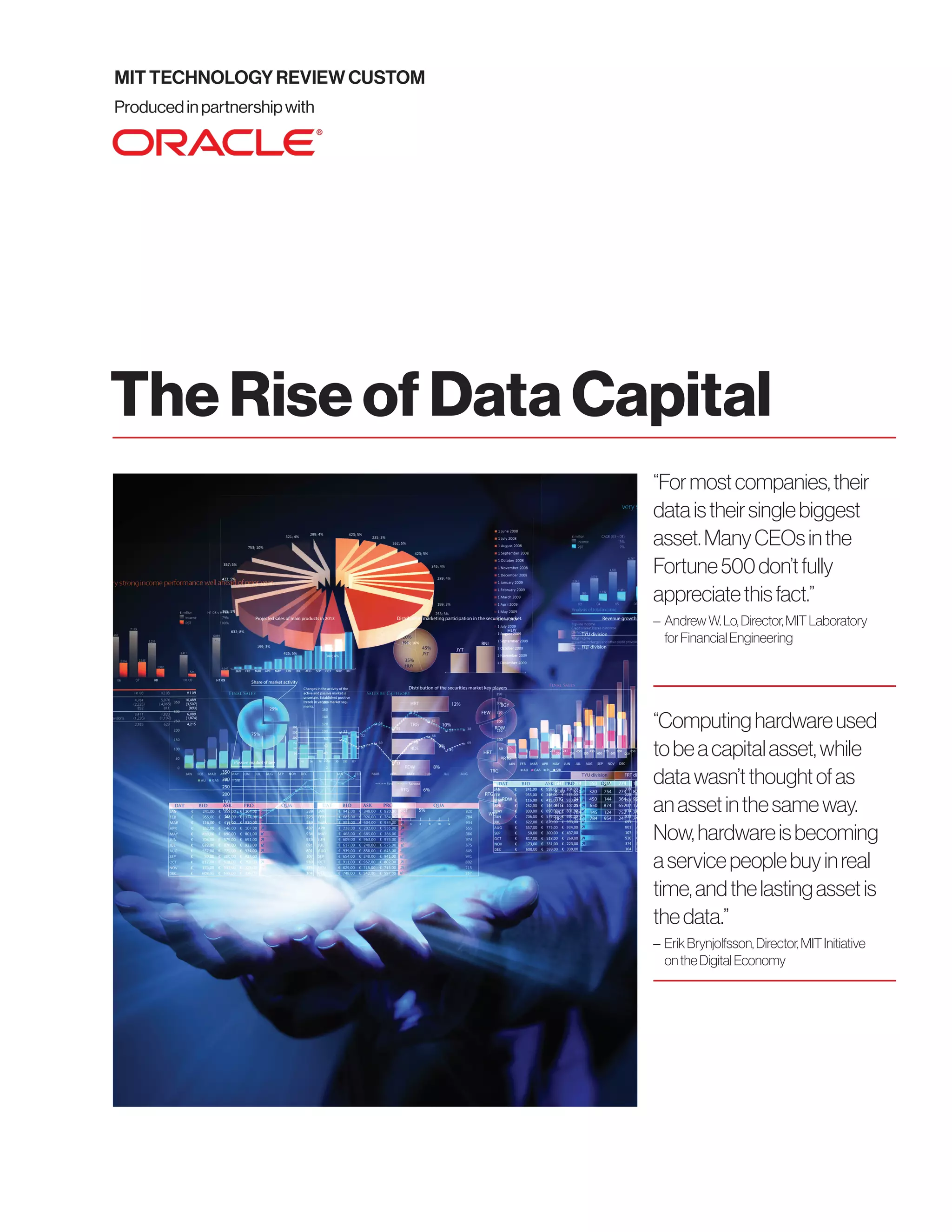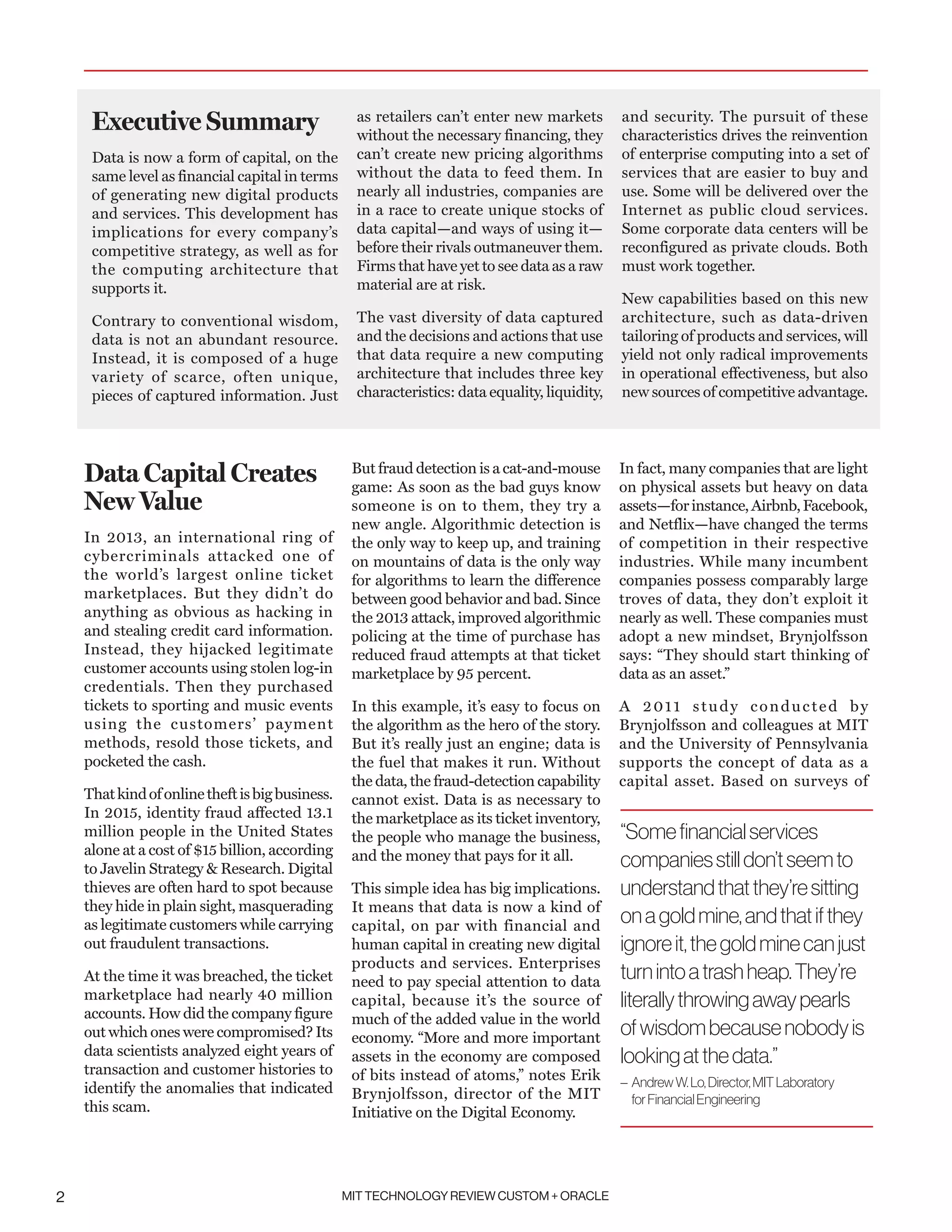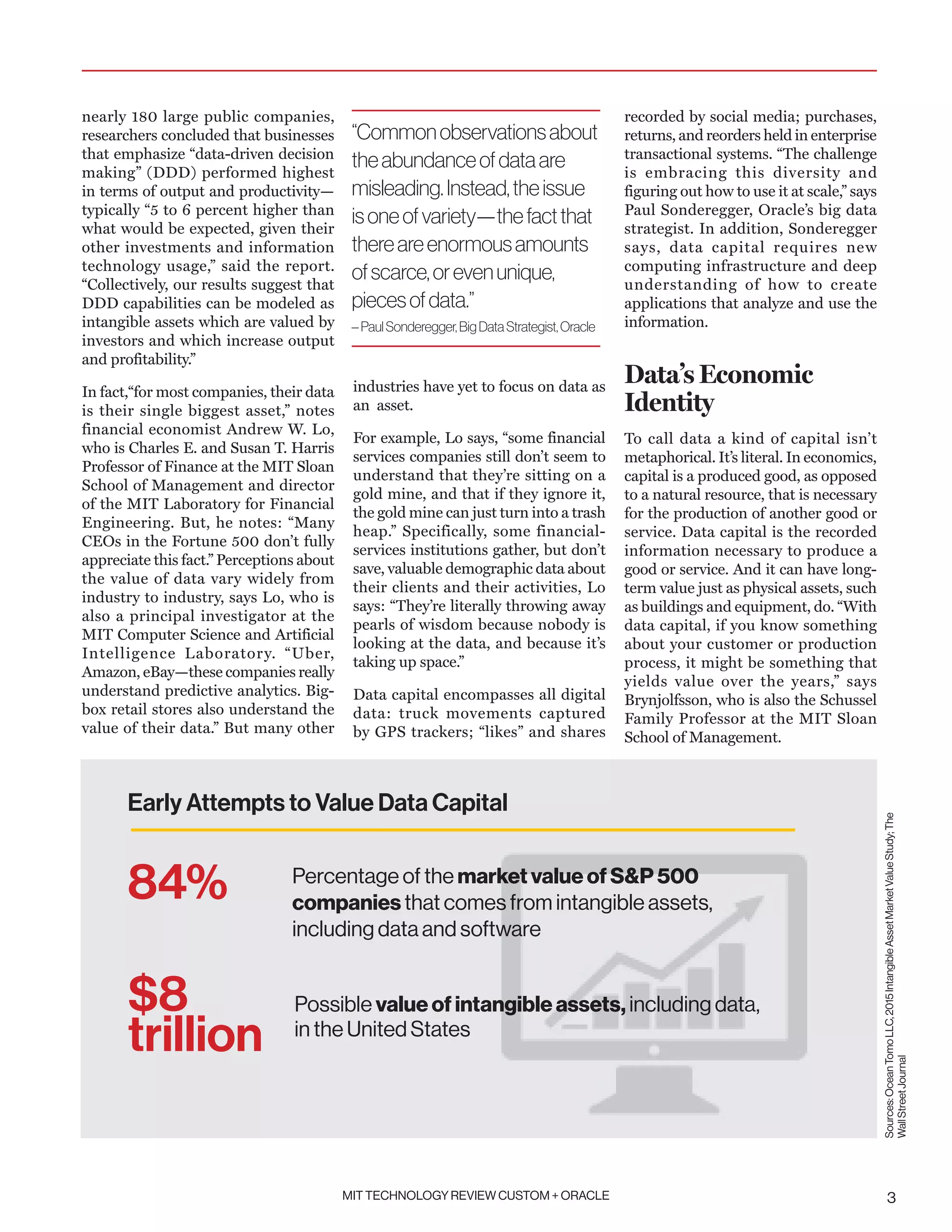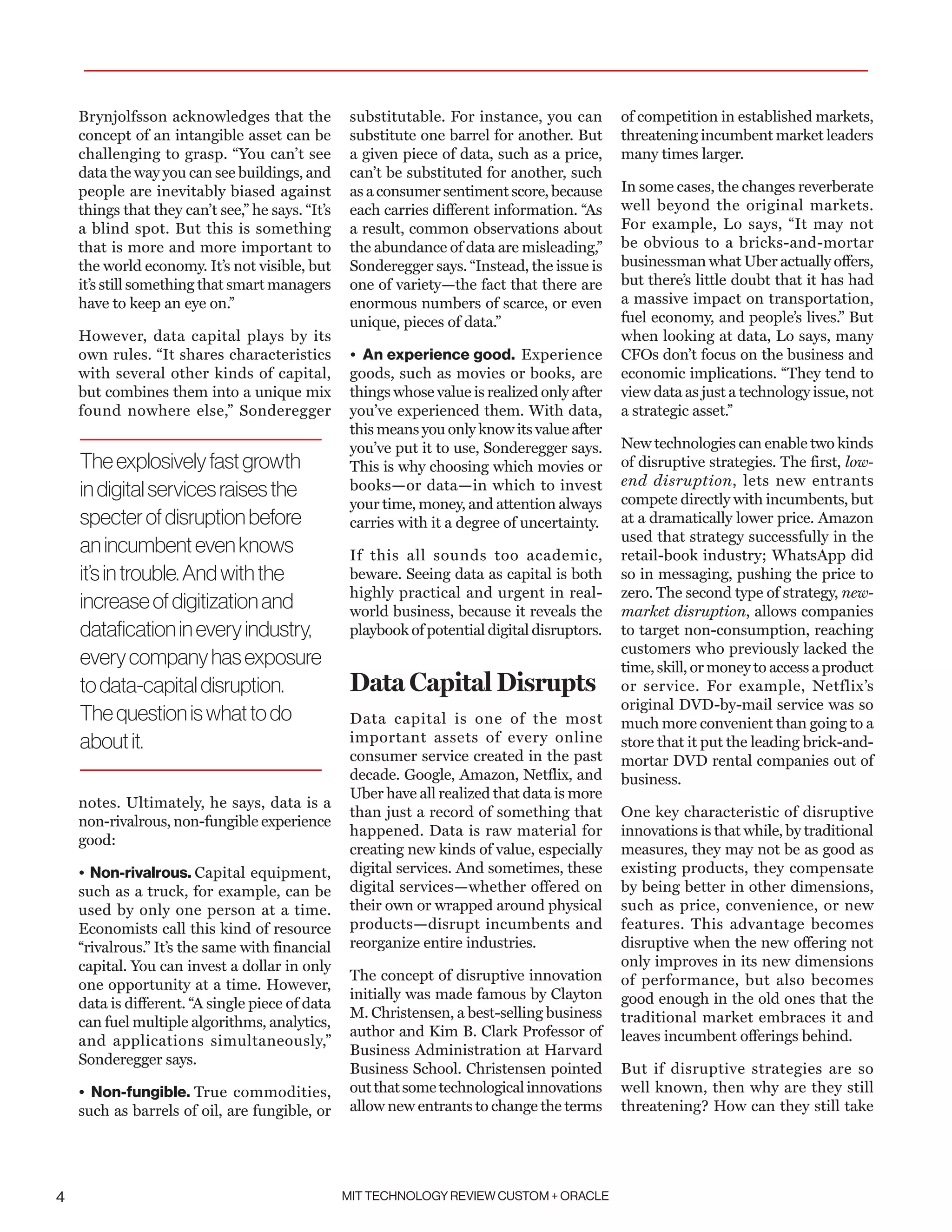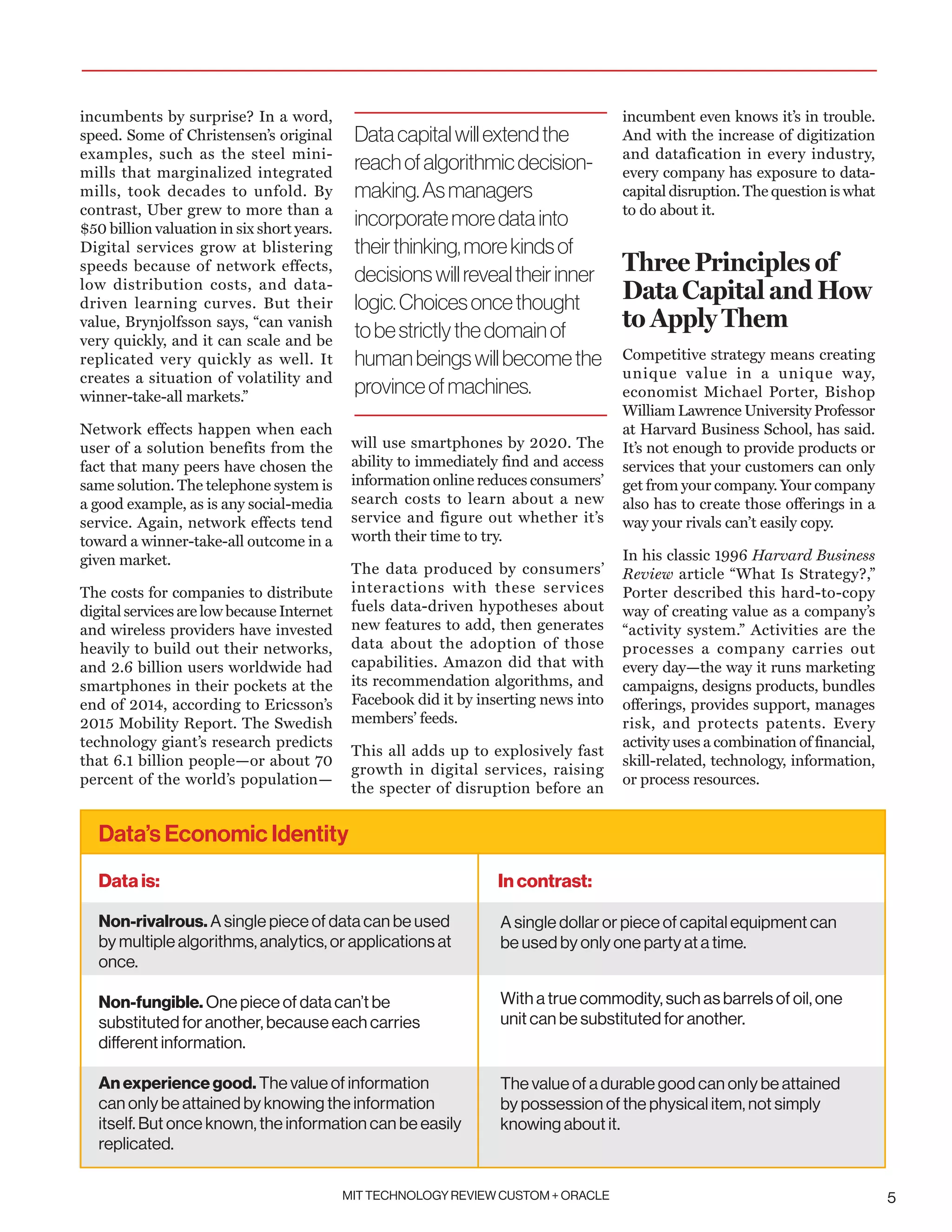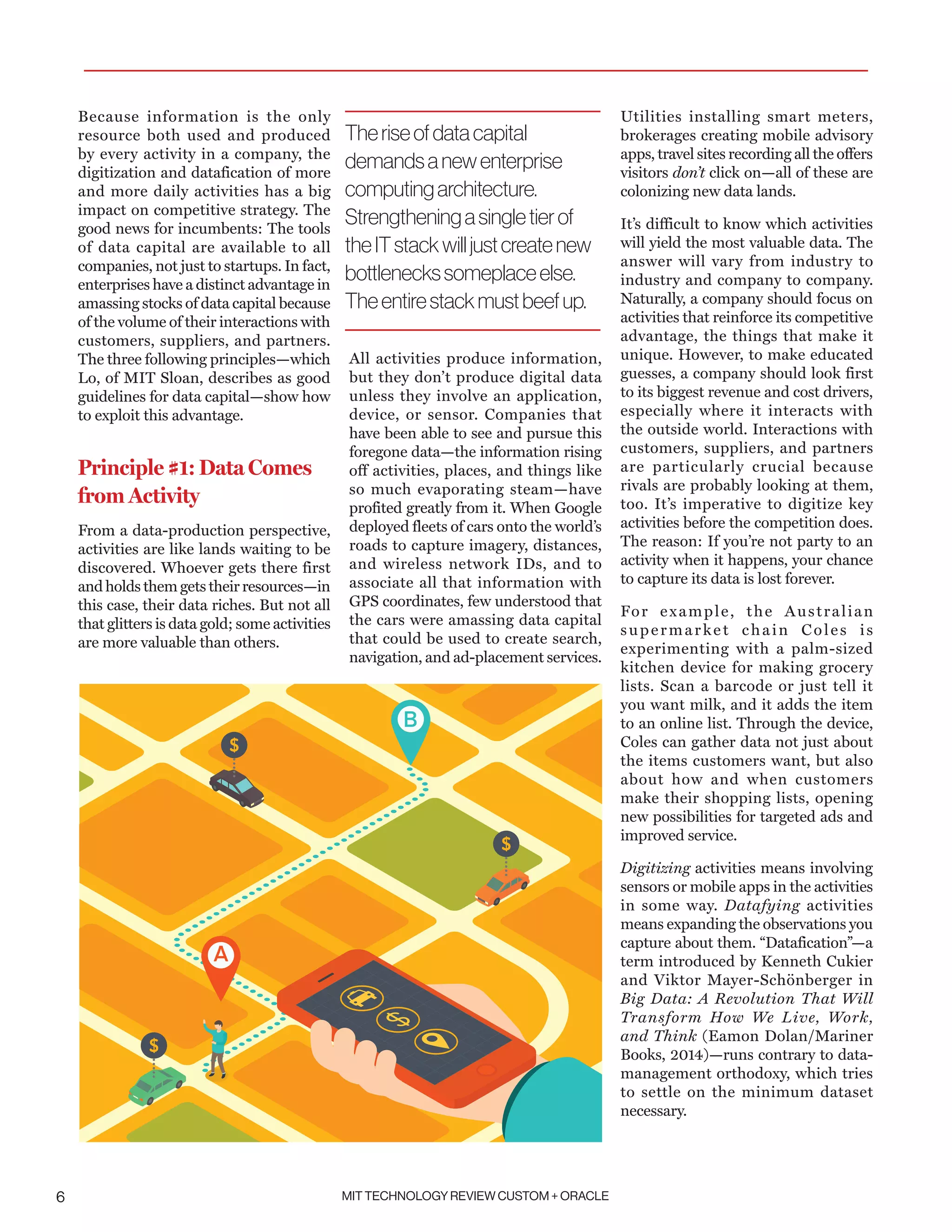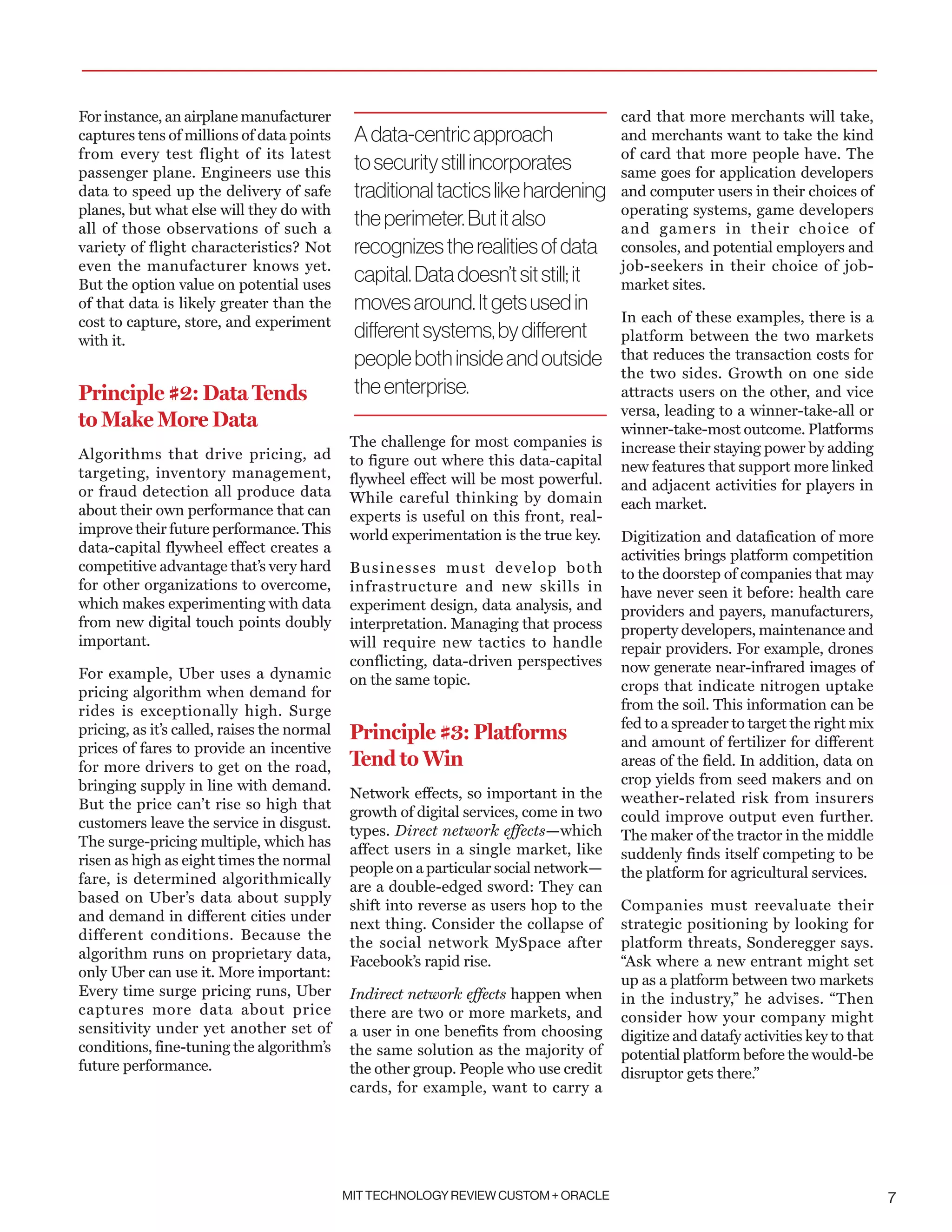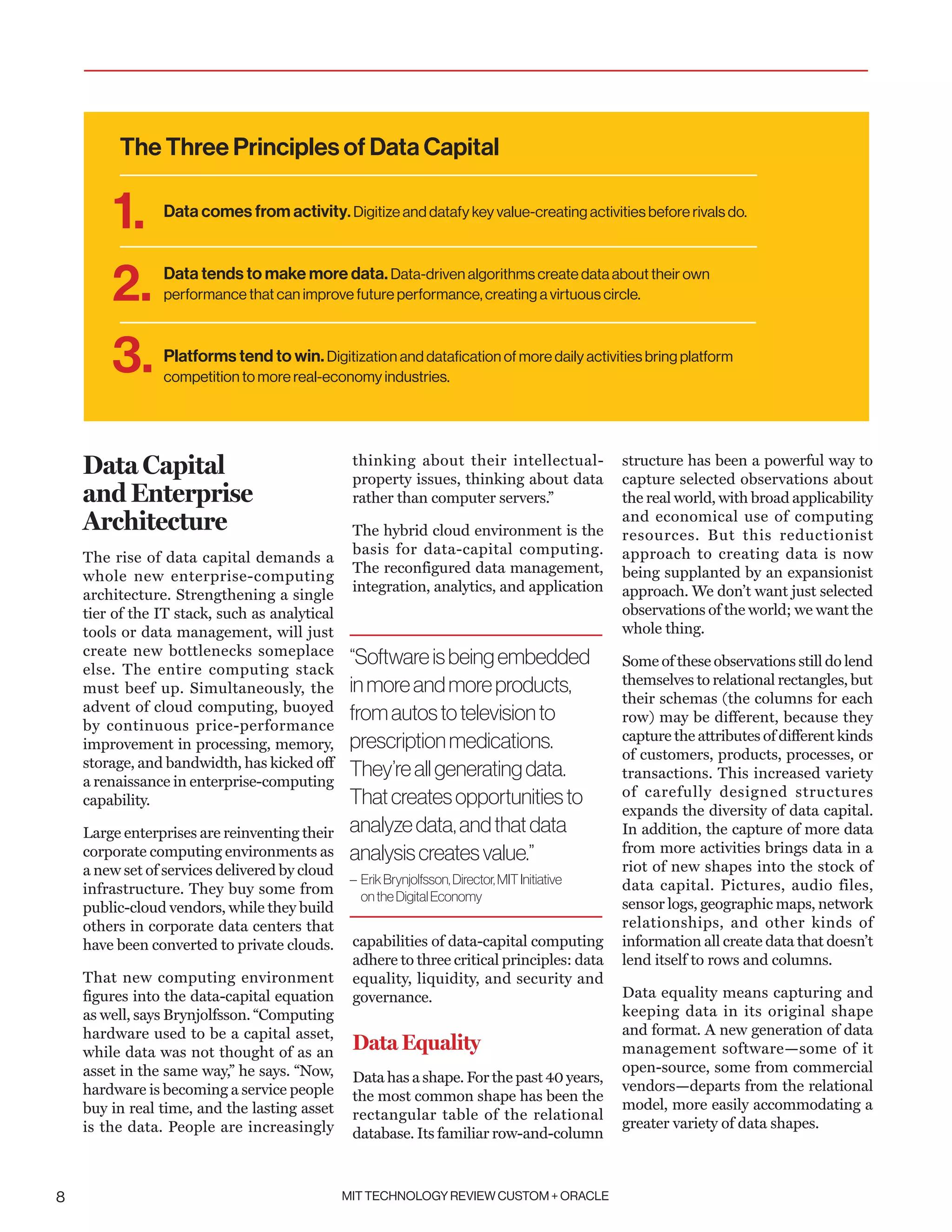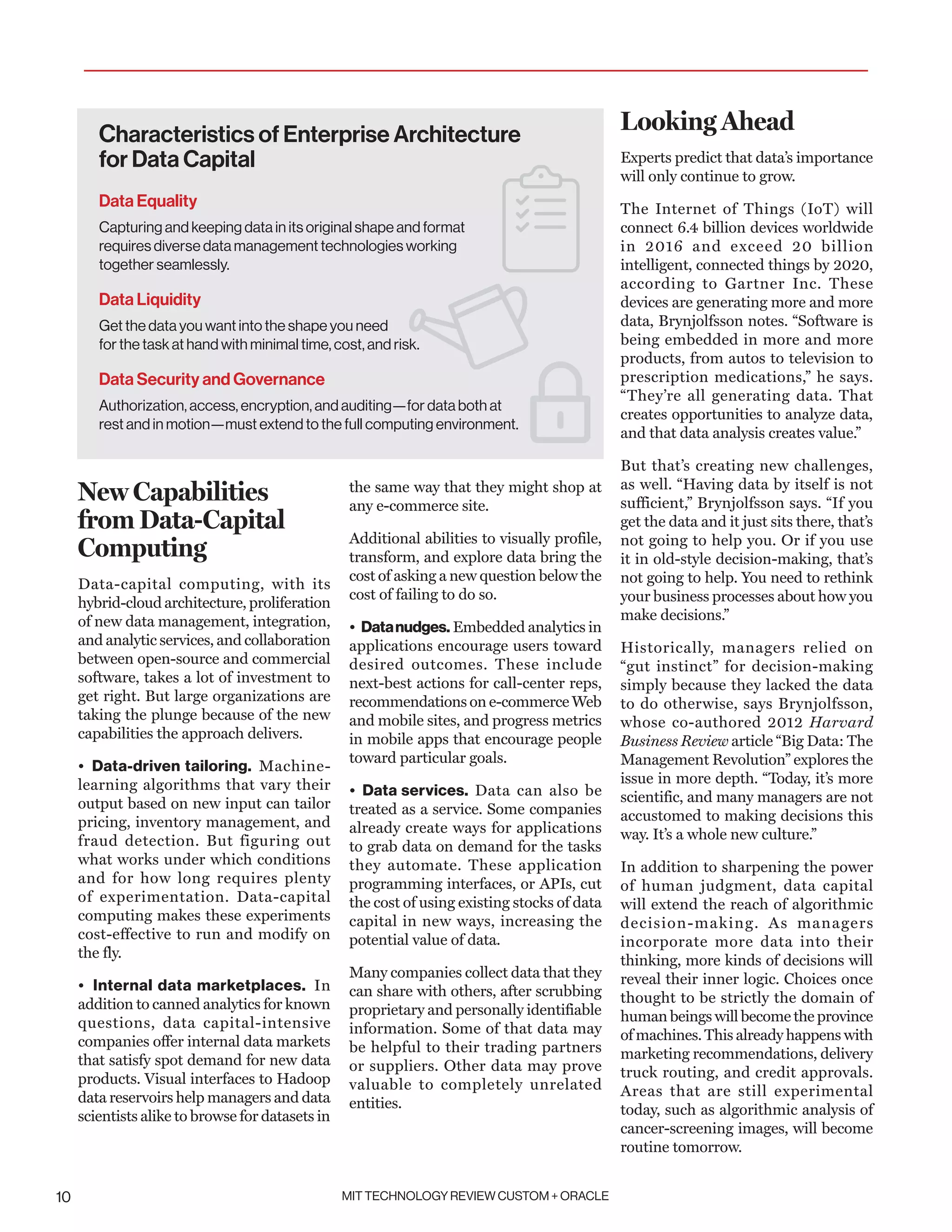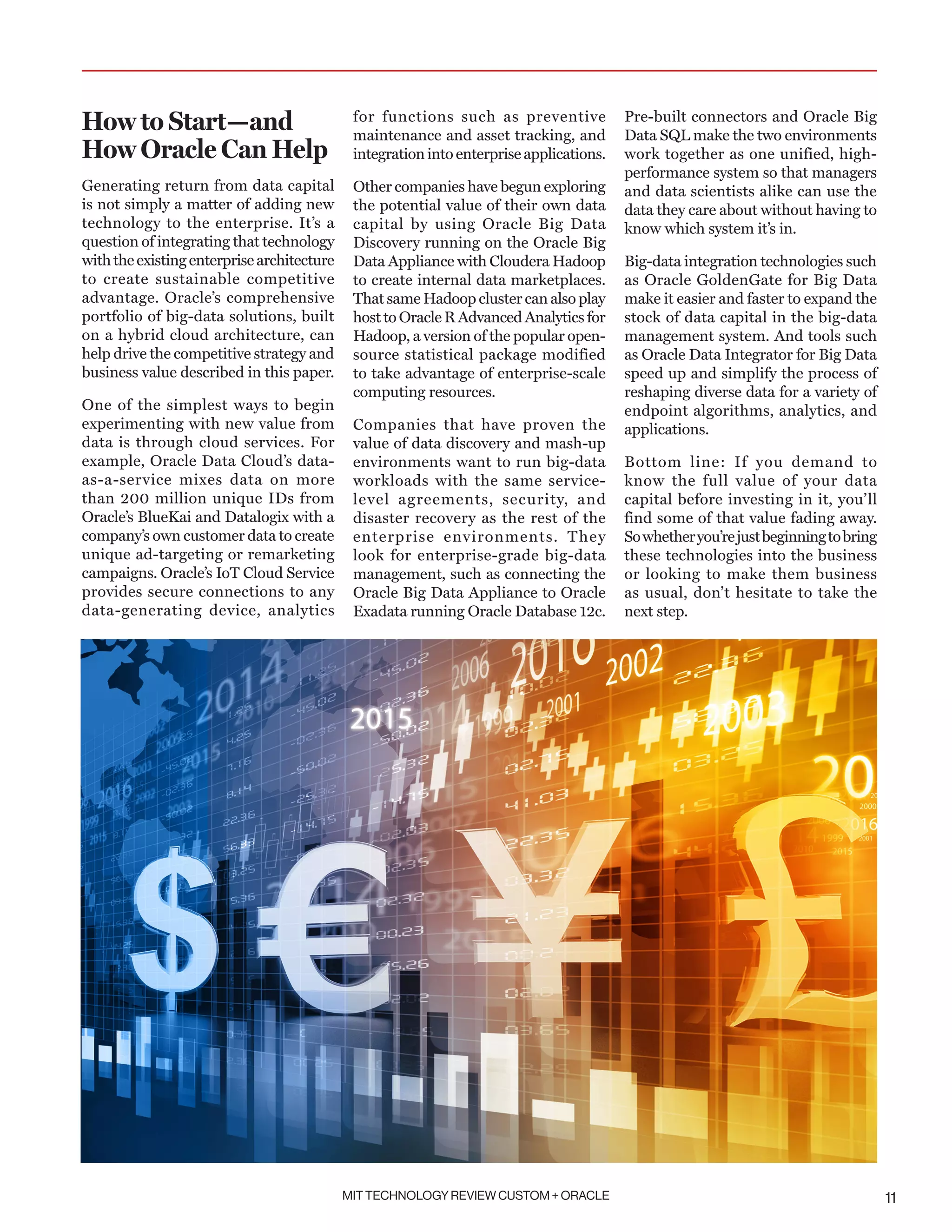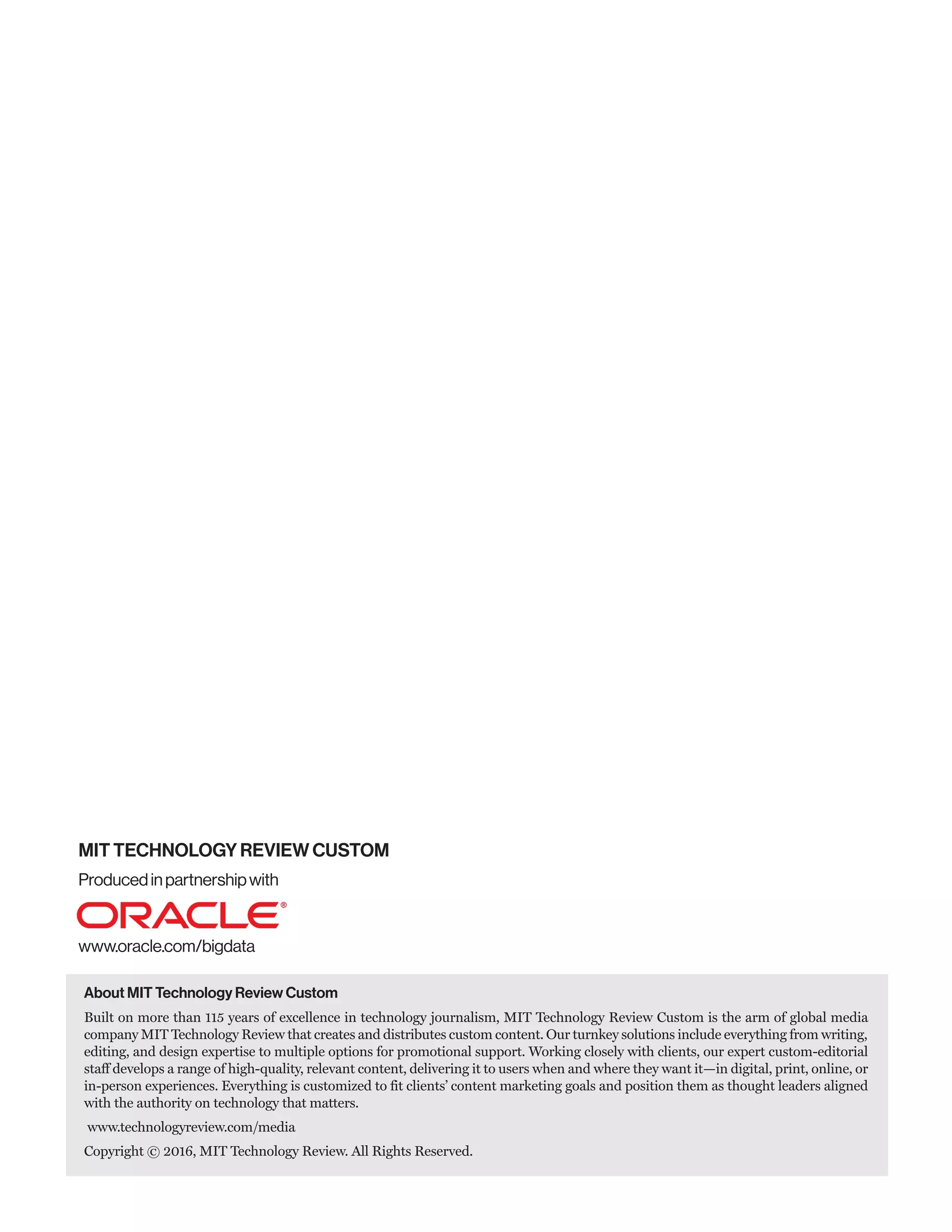Data is now considered a form of capital that is essential for companies to generate new digital products and services. As data has become a major asset, companies must treat their data as a capital investment and develop new computing architectures and analytics capabilities to extract maximum value from their data assets. Those who fail to view data as a vital capital resource risk losing their competitive advantage to companies that more effectively leverage their data.
